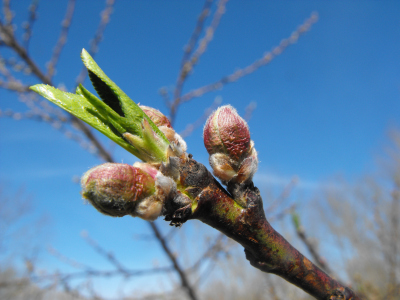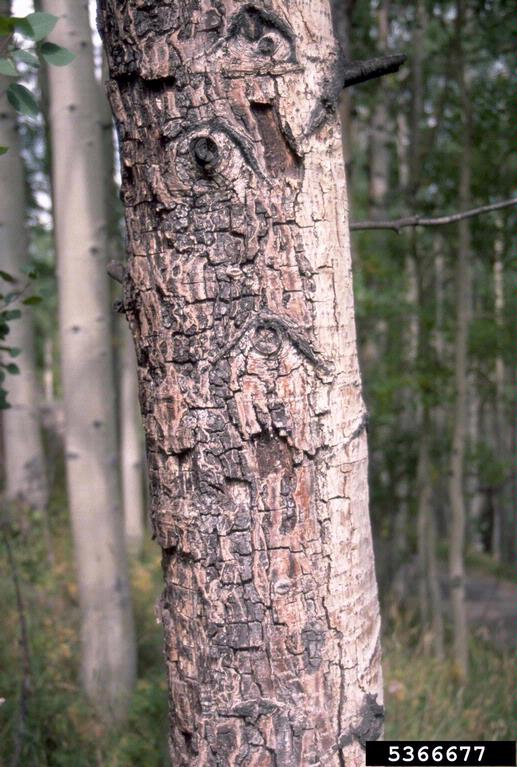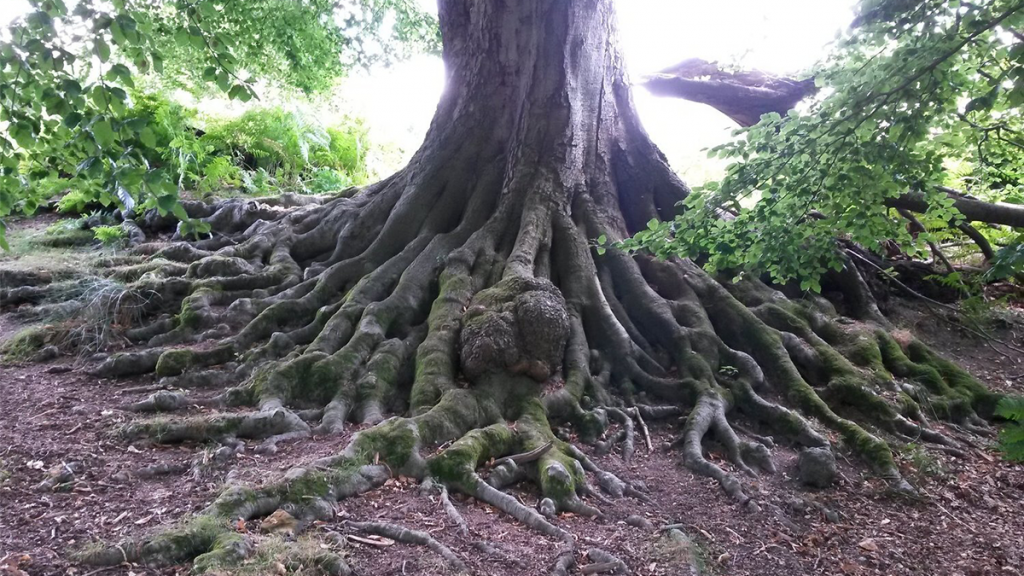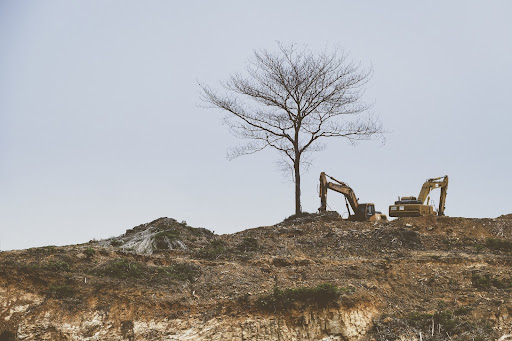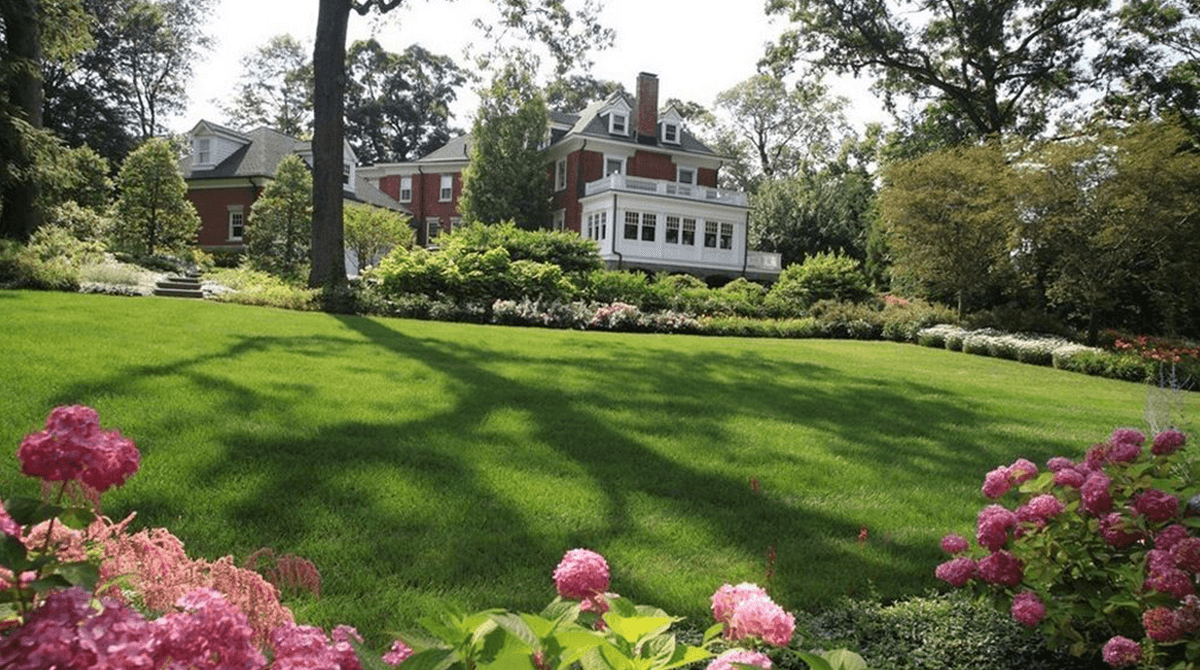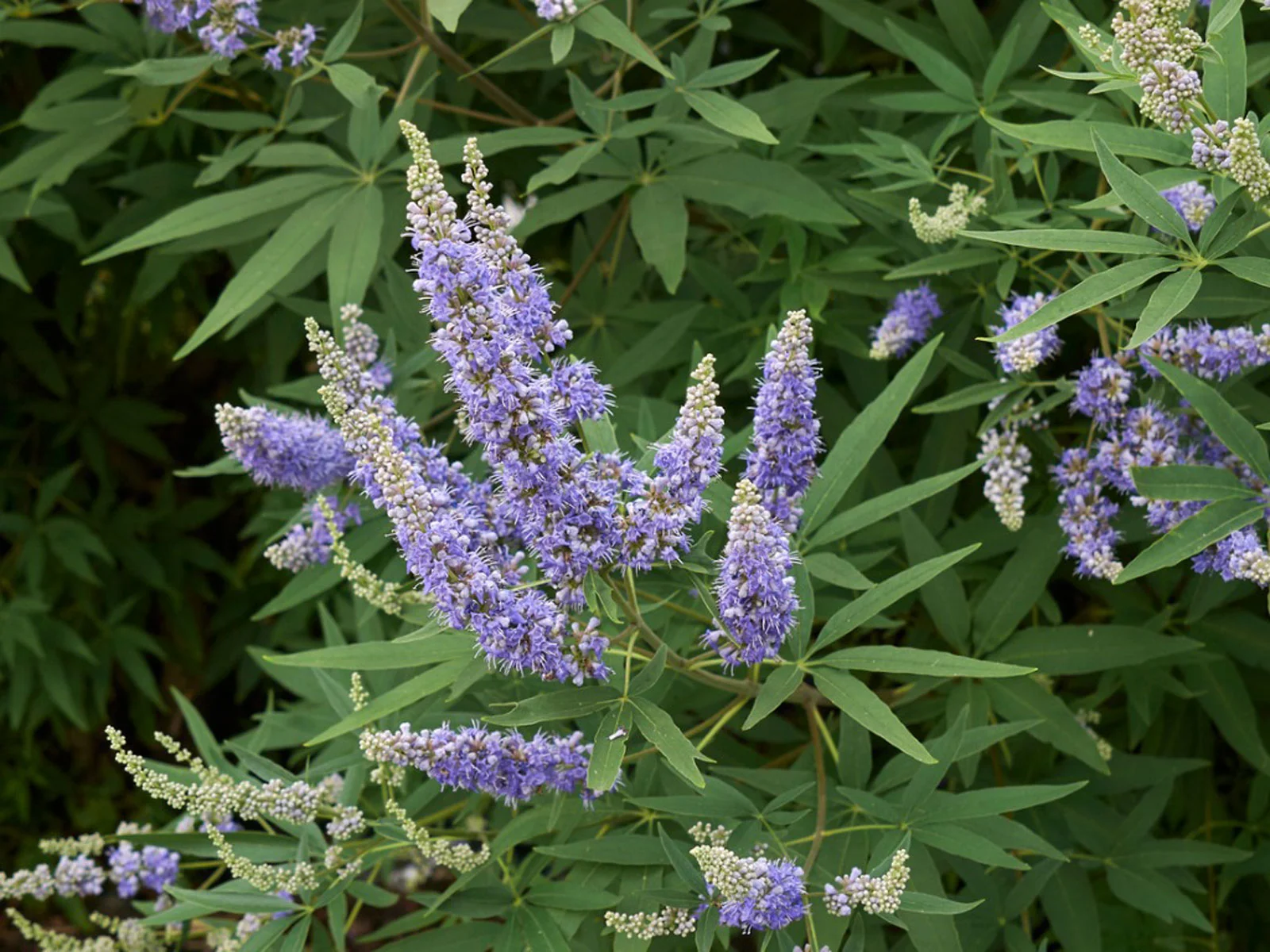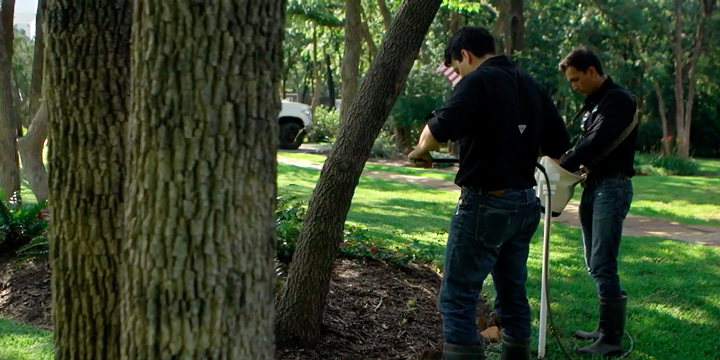
Date March 16, 2020
Category
For good reason, many people in the Dallas area prefer to plant trees in their yards. From good looks, air quality, and the value of shade during the Texas summer, trees help make a home feel like home. If selected, planted, and maintained the right way, trees add value to commercial properties and help them stand out among a growing metroplex that some may refer to as a “concrete jungle.” Although these plants provide excellent aesthetic and landscaping benefits, it takes significant time, effort, and knowledge to help these trees thrive in their surroundings.
Like humans, trees are prone to diseases. Ignoring the maintenance of your trees, while overlooking typical symptoms of fungi growth, can put the health of your trees at serious risk.
Image caption: bud break on a peach tree
This is why it’s important to treat fungus before your tree’s buds start to break in the Spring or simply before your tree starts to produce shoots after the winter months.
At this time in their growth cycle, the shoots are most susceptible to fungi growth. With that said, here are the common funguses in the Dallas area and how you can watch out for them.
The Hypoxylon Canker
The hypoxylon canker affects a wide variety of trees native to the North Texas region. Oak, elm, pecan, and sycamore trees are the most susceptible to this fungus. Unfortunately, the hypoxylon canker is fatal and can kill your tree surprisingly quickly.
Therefore, if you notice this fungus growing on your tree, you should contact a Certified Arborist for proper removal. The disease is characterized by its stag-head condition, where the branches strongly resemble the antlers on a stag’s head. Also, branches affected by this fungus appear leafless and dead.
Image credit: William Jacobi, Colorado State University, Bugwood.org
The hypoxylon canker affects trees that are already weakened by its environmental conditions, such as a drought. Trees with this fungus cannot be treated, and you can generally see signs of this disease in the following ways:
- Peeling bark on trunks and branches
- Sapwood decay
- Dark-colored spores visible under peeling bark
Unless you provide constant maintenance to your tree during drought season, your only option is contacting a Certified Arborist to remove the damaged tree from your property.
The Oak Wilt
As its name indicates, this is one of the common fungi affecting oak trees in Dallas, Argyle, Southlake, and the general North Texas region. This disease is a vascular wilt disease and it is caused by the fungus, Ceratocystis fagacearum. Oak wilt can start in any type of oak tree except for Post Oaks and it effectively stops the flow of water and nutrients by plugging the vessels in a tree’s vascular system. While Post Oaks are fairly immune to this, you should also know that the Bur, Chinquapin, White, and Mexican oaks may be more resistant to this fungus as well. It’s the Live Oak and Red Oak trees that you really have to watch out for!
The oak wilt can spread to other trees through root grafts and nitidulid beetles. Therefore, preventative care and maintenance are instrumental in combating the development of this fungus.
Symptoms of oak wilt are the dropping and browning of leaves, which can eventually lead to the death of the tree.
Anthracnose
Trees in the Dallas area can develop anthracnose. This fungus grows primarily on lower branches during a wet and cool spring climate. You can usually spot anthracnose by locating lesions on your tree’s leaves, as this is the only recognizable symptom.
Anthracnose is commonly found in ash trees, which are ubiquitous in the North Texas region. This fungus causes repeated annual defoliation. This can weaken trees and make them more likely to contract more diseases and attract insects.
Mushroom Root Rot
The mushroom root rot, also known as the oak root rot, can cause growth reduction, root decay, and ultimately death. This fungus mainly affects trees that have been weakened by specific environmental factors, competition, and pests.
However, healthy trees are also susceptible to this fungus, which can kill them or expose them to dangerous attacks insects and other deadly fungi. One glaring sign of mushroom root rot is the presence of white mushrooms at the base of your tree.
Peeling bark on the branches and the trunk is also a common symptom. You can find white fungus under the peeling to diagnose your tree. Interestingly, lawn grass growing too close to your tree can contribute to the onset of mushroom root rot.
Bacterial Leaf Scorch
One of the deadliest fungal infections known in the Dallas area is the Bacterial Leaf Scorch. This disease is transmitted by pests that consume xylem, the part of the tree absorbs water for growth.
As the bacteria clog the xylem, water can no longer be consumed by the tree. This causes the tree to slowly die and appear as if it needs water. The most common sign of bacterial leaf scorch is in the name – a brown or red “scorch” around the edges of the tree’s leaves.
The scorch is followed by a distinguishable halo separating the decay from the green parts of the tree’s leaves. Symptoms of this infection recur each year until the tree finally dies.
There is no known cure for bacterial leaf scorch. Treating your trees to withstand the plight of dangerous insects can help prevent the disease before it becomes problematic.
Keep Your Trees Safe Before Bud Break!
During bud break, your tree lets its guard down for all available fungi and insects to take full advantage. Typical of the spring, North Texas has enjoyed a fair amount of precipitation these past few weeks, and rising temperatures make for greater humidity. With that, the weather is favorable to increasing the reproduction of bug and fungi populations. With them growing at an increasing rate, now it is the time to make sure your certified tree expert has had a moment to help you mitigate any risks.
To learn more about how you can treat your trees to resist deadly fungi, give us a call today at tel:(817) 592-6846 or send us a message.
We’re a little different than the average tree services company.
Learn more about TreeNewal’s ISA Certified Arborists and how sustainable tree care services add more value to your bottom line.
Healthy trees, healthy lives.
